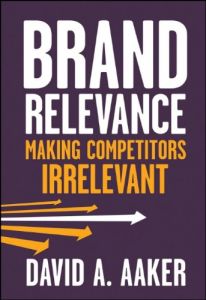Join getAbstract to access the summary!

Join getAbstract to access the summary!
David A. Aaker
Brand Relevance
Making Competitors Irrelevant
Jossey-Bass, 2011
What's inside?
Own your brand category and keep competitors at bay.
Recommendation
Every company wants to produce a product or service so successful that people equate it with a market category. Xerox did it with copiers, and the word “Kleenex” has become a common synonym for tissue. Today’s category-defining brands include Toyota’s Prius and Apple’s iPod. Firms such as Zappos, Best Buy and Amazon have introduced offerings so revolutionary they redefined their markets and created new categories. Moreover, they made it almost impossible for competitors to enter the fray. In this in-depth work, brand guru David A. Aaker provides a model for making your brand relevant and dominant. This thorough, well-researched work resembles a textbook, even though Aaker keeps it lively with dozens of case studies. getAbstract highly recommends Aaker’s well-presented information to marketers and branding practitioners.
Summary
About the Author
David A. Aaker is vice chairman of the consulting company Prophet and professor emeritus at the Haas School of Business, University of California, Berkeley.





















Comment on this summary